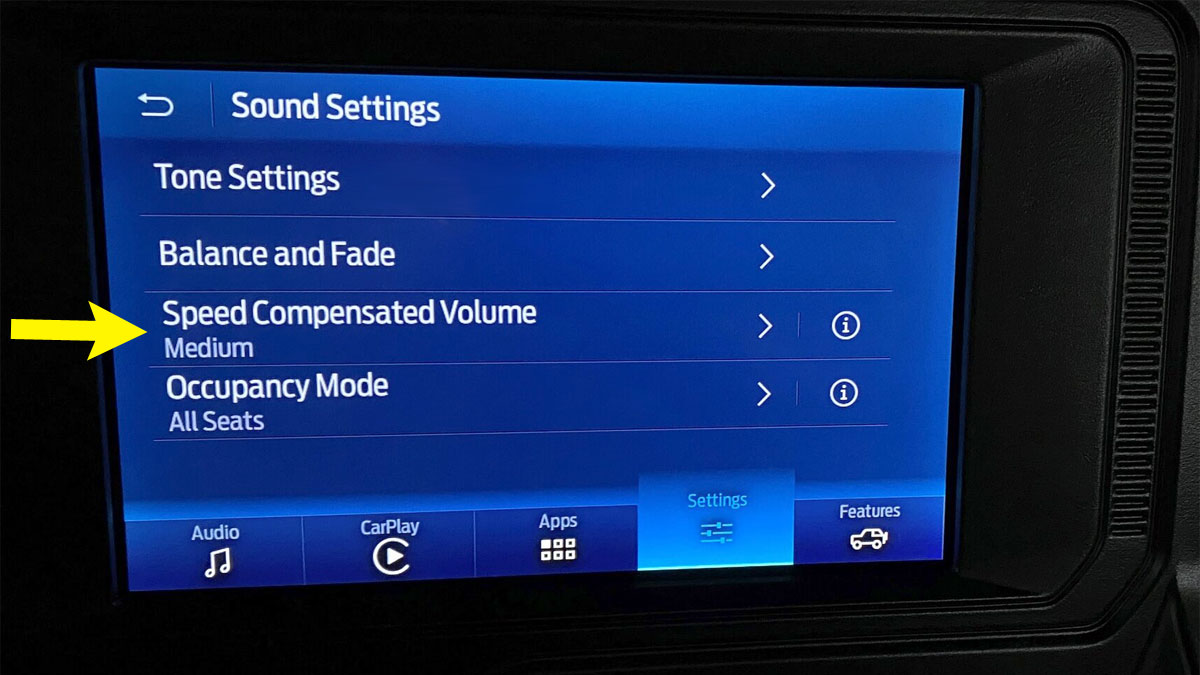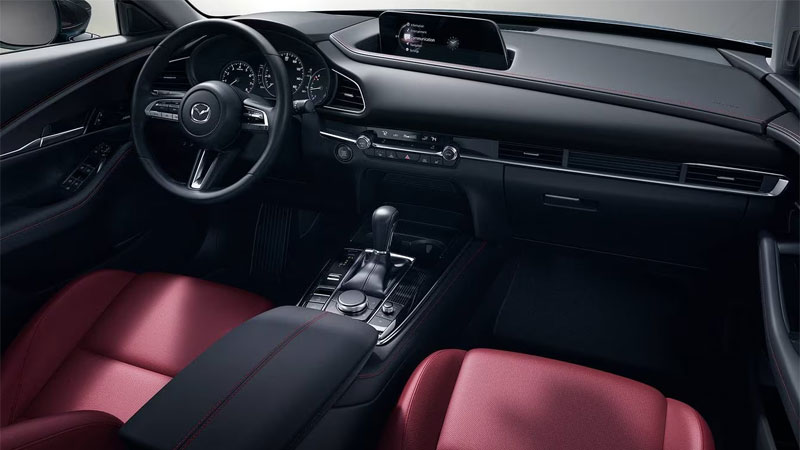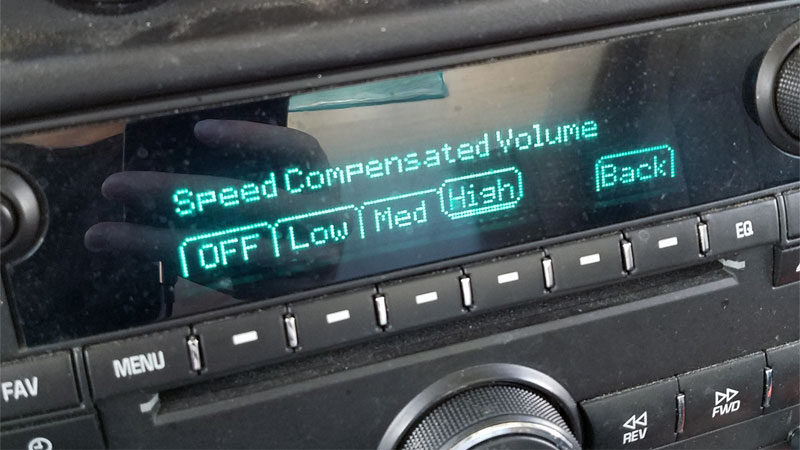Have you ever blasted your favorite song while driving only to realize you can barely hear it over loud road noise and wind as you accelerate? Or turned up the volume while cruising on the highway, forgetting how incredibly loud it is at lower city speeds?
Managing your car’s stereo volume in relation to your vehicle’s speed and noise level can be annoying. Fortunately, modern speed compensated volume systems are engineered specifically to deal with this problem by automatically adjusting loudness based on driving speed.
But how does this technology work and is it as flawless as advertised?
What Is Speed Compensated Volume?
Speed compensated volume (SCV) refers to an advanced audio system that automatically adjusts the loudness of a car stereo system based on the vehicle’s speed. As drivers, we all know the frustration of constantly fiddling with volume knobs or buttons as our speed and the ambient road noise changes. Speed compensated technology aims to solve these volume inconsistencies.
Built into many newer vehicles (especially luxury models), SCV utilizes microphones inside the car’s cabin to actively monitor background noise patterns. Artificial intelligence then analyzes increasing wind, tire, exhaust, and transmission sounds at faster speeds compared to quieter idle or slow speeds.
By constantly sampling cabin loudness and cross-referencing a vehicle speed sensor, the car stereo can seamlessly increase volume when accelerating to counteract the heightened interior noise. Then when speed decreases, the smart system will attenuate the sound so music isn’t painfully loud in slower-moving city traffic.
This dynamic real-time auto volume allows media audio levels to seamlessly blend with your car’s shifting noise signature based on driving style and speed. The end goal is a more pleasant, distraction-free listening experience focused on safety. But is the technology truly advanced enough to match our variable preferences?
How It Works
The key to speed compensated volume is a microphone, or often multiple mics, placed strategically around the car’s cabin. These advanced microphones pick up the entire audible spectrum of sounds present while driving. Everything from slight wind noise while idling to loud engine roars and road rumble at highway speeds are captured.
Digital signal processors then dissect the complex noise patterns using advanced algorithms. Signatures related to tire rotation, wind flow, exhaust notes, and mechanical sounds are recognized and compared to existing acoustic datesets. This allows the system to accurately estimate current vehicle speed based purely on interior cabin noises.
At the same time, the mic samples are monitoring overall cabin loudness. As exterior noise increases with speed, the integrated volume controller reacts by turning up the stereo’s output level. The compensation depth can vary from slight graduated bumps to more aggressive 10+ dB jumps depending on speed and OEM calibration.
Some systems allow drivers to set sensitivity preferences and volume curve aggressiveness. But the general concept involves masking elevated driving noise with proportional stereo volume at middle to high speeds. Then attenuating loud music to appropriate levels during slower speed city driving where engine noise naturally abates.
Pros/Cons of Speed Compensated Volume
Now that we understand how it works, what are the major advantages of using speed compensated volume technology?
Benefits
- Convenience – By far the biggest benefit is removing the need to manually adjust volume as speed conditions change. Keeping music at the right output level automatically reduces distraction and annoyance.
- Audibility – Speed compensation allows audio to remain clearly audible even when driving noise rises. No more maxing volume only to have music drowned out by wind and tire roar.
- Safety – Studies show manually adjusting stereo buttons and taking focus off driving heightens crash risk. Allowing vehicles to self-regulate one more task enables safer focus.
- Customization – Some systems allow drivers to set volume compensation aggressiveness, max volume limits, and speed zone preferences for more personalization.
- Cabin Clarity – Since loudness is tailored to overcome ambient noise specifically, cabin conversations remain easier amid driving noise.
- Fuel Efficiency – Counterintuitively, light background music actually keeps drivers more alert and attuned to optimum efficiency driving behaviors.
Drawbacks
While speed compensated volume technology offers some clear benefits in theory, the execution also comes with drawbacks in real-world driving environments.
- Inaccuracy – Even advanced noise-sensing algorithms don’t always correctly guess vehicle speed or rate of acceleration. Volume spikes or inappropriate levels do occur.
- Spikes and Dips – Relatedly, rapid volume jumping up and down can be distracting or annoying for drivers and passengers.
- High Speed Noise – Compensating for intense wind and road noise at very high speeds can overly amplify music or exceed safe listening levels.
- External Noise Focus – The system reacts to cumulative cabin noise, which doesn’t always differentiate between wanted engine sounds and unwanted external noise permeating the interior.
- Environment Assumptions – Leaving windows down or sunroof open creates an acoustic environment that confuses algorithms.
Like any new technology, speed compensated volume has room for improvement as more vehicles employ learning systems. But for now, inconsistencies do present challenges under certain driving dynamics.
Optimization Tips
How can you get the most out of speed compensated volume technology and customize it to your driving preferences? Here are some useful tips for optimizing the experience:
- Adjust Sensitivity Setting – Many systems allow you to dictate how aggressively volume levels compensate for noise. Find the right balance for your ears.
- Use Automatic Loudness Limiter – This feature prevents volume from exceeding safe audio levels at any speed.
- Disable When Windows Are Down – Leaving windows or the sunroof open confuses the noise-based speed estimate.
- Re-Calibrate if Issues Arise – Some vehicles let you re-run the automatic calibration sequence if volume behavior seems off.
- Account for Passenger Count – More weight and occupants can alter vehicle noise signatures and throw levels off.
- Integrate Satellite Radio Settings – Balance the speed compensated FM radio with satellite music loudness.
- Sync With Bluetooth Calls – Prevent phone calls from being drowned out by a sudden stereo spike.
Car Manufacturers That Use SCV

Some of the major vehicle manufacturers that currently offer speed compensated volume (SCV) systems in their models include:
Toyota and Lexus
Toyota and its luxury brand Lexus have offered speed-variable volume in vehicle models for over a decade. Many models under both brands feature Toyota’s Automatic Sound Levelizer system as part of upgraded Entune Audio packages.
Mazda
Mazda uses an advanced noise cancellation system called AudioPilot (from Bose). This system dynamically adjusts music playback to account for background noise and vehicle speed in real-time. It filters out transient noises like speed bumps and instead focuses on compensating for sustained environmental noise factors.
Ford
Ford employs SCV technology in several vehicle models including the Ford Mustang, Explorer, Edge, and F-150. It adjusts audio volume based on vehicle speed and customer preset preferences.
GM
General Motors brands like Chevrolet, Buick, and GMC offer a Speed Compensated Volume function through the infotainment system in many trucks, SUVs and cars with Bose premium audio. It’s often referred to as “Auto Volume”.
Volvo
Numerous recent Volvo models contain an auto-leveling sound system reliant on vehicle speed. Volvo’s speed-adjusted volume control is designed to maintain music loudness within an optimal range.
Additional luxury brands like Audi, BMW, Mercedes and Porsche also deploy their own speed-variable volume technologies to counteract noise and improve audio quality during performance driving. So the feature is expanding across mainstream and prestige automakers.
Future Outlook
While speed compensated volume already provides enhancement for many new car models and audio systems, there remains room for improvement and continued innovation.
As with any AI-enhanced technology, more advanced machine learning paired with sensor improvements will allow speed-variable volume to better adapt to individual driving dynamics in real-time.
Instead of relying on generic acoustic noise modeling, in-cabin microphones and processors will become personalized to the car occupants, driving style, usual routes, and tailored audio preferences. This will increase accuracy of speed estimates and precision of volume compensation effects.
Additionally, emerging directional audio environments like Dolby Atmos are primed to intersect with speed-variable outputs for a supremely tailored spatial audio experience. Music and entertainment audio objects will adapt through 3D space in the cabin according to external noises and speeds.
And interfaces with autonomous driving systems will eventually allow stereo volumes to be optimized for safety based on computer control of the vehicle. This ensures music loudness never eclipses important warning chimes or prevents awareness of surrounding traffic noises.
The bottom line is that speed compensated volume’s future lies in ultra-customization and precision immersion thanks to smarter in-car computing.
- History of the Chevrolet SSR: The Retro-Styled Convertible Pickup - Apr 25, 2024
- The History of the BMW M Coupe (the “Clown Shoe”) - Mar 26, 2024
- The History of the Ford Flex - Feb 28, 2024




